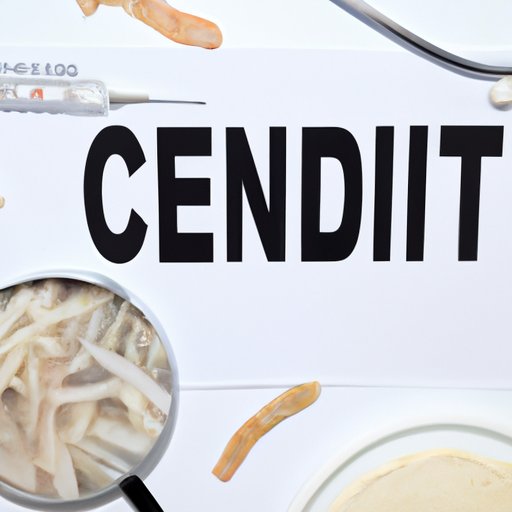Understanding the Candida Diet: A Holistic Approach to Healing Candidiasis
Welcome to the ultimate guide to understanding the candida diet! If you’ve been struggling with candidiasis or simply want to improve your overall well-being, this comprehensive overview will provide you with all the information you need to get started on your journey to better health.
The Candida Diet: Explained
Candida is a type of yeast that naturally exists in our bodies, primarily in the digestive system. However, when imbalances occur, such as due to a weakened immune system, excessive stress, or a diet high in refined sugars and carbohydrates, it can lead to candida overgrowth.
Candidiasis, commonly referred to as a yeast infection, can manifest in various ways, including oral thrush, vaginal yeast infections, and digestive issues like bloating and gas. Adopting a candida diet, also known as the anti-candida diet, aims to eliminate foods that promote candida overgrowth and support the body’s natural healing processes.
Healing from Within: The Benefits of the Candida Diet
By following the candida diet, you can experience a range of potential health benefits. This diet focuses on eliminating processed foods, refined sugars, and carbohydrates, which can disrupt the balance of beneficial bacteria in your gut microbiome.
A well-maintained gut microbiome is crucial for overall health, as it supports a strong immune system, optimal digestion, nutrient absorption, and mental well-being. By adopting the candida diet, you give your body the opportunity to heal from within, restore a healthy gut microbiome, and reduce the symptoms associated with candidiasis.
Research also supports the effectiveness of the candida diet. Studies have shown that eliminating sugar and processed foods can decrease candida overgrowth and improve symptoms. Inflammation levels also tend to decrease, benefiting individuals with chronic conditions related to candidiasis, such as autoimmune disorders, skin issues, and mental health concerns.
Getting Started: How to Begin the Candida Diet
If you’re ready to embark on the candida diet journey, here’s a step-by-step guide to help you get started:
- Educate yourself: Familiarize yourself with the principles of the candida diet, including what foods to avoid and what to incorporate into your diet.
- Eliminate trigger foods: Remove foods that promote candida overgrowth, such as processed sugars, alcohol, refined carbohydrates, and moldy foods.
- Focus on anti-inflammatory, nutrient-rich foods: Prioritize consuming vegetables, low-sugar fruits, lean proteins, healthy fats, and whole grains.
- Support your gut health: Incorporate probiotic-rich foods and consider taking high-quality probiotic supplements to restore the balance of beneficial bacteria in your gut.
- Manage your stress: Stress can weaken your immune system and contribute to candida overgrowth. Practice stress management techniques like meditation, deep breathing exercises, and regular physical activity.
Remember, the candida diet is not a short-term fix. It is a long-term commitment to your health and wellness. Take it one step at a time and be patient with yourself as you navigate this new way of eating and living.
Overcoming Challenges and Staying Motivated
Following a restrictive diet like the candida diet can be challenging. Here are some practical tips to help you overcome challenges and stay motivated:
- Meal planning: Plan your meals ahead of time to ensure you have candida-friendly options readily available.
- Explore new recipes: Get creative in the kitchen and try out new recipes that align with the candida diet. There are plenty of delicious and nourishing options available.
- Find support: Connect with others who are following or have followed the candida diet. Join online communities or seek guidance from healthcare professionals specializing in gut health.
- Practice self-care: Take time for self-care activities that promote relaxation and reduce stress, such as taking baths, practicing yoga, or enjoying a hobby you love.
- Celebrate milestones: Acknowledge and celebrate your achievements along the way. Reward yourself with non-food-related treats to keep yourself motivated.
A Holistic Approach to Candidiasis and Overall Health
The candida diet is more than just a diet; it is a holistic approach to healing candidiasis and improving your overall health. By addressing the root causes of candida overgrowth and focusing on nourishing your body with nutrient-rich foods, you are giving yourself the best chance at long-term wellness.
Additionally, the candida diet can have a positive impact on various body systems, including the immune system, digestive system, skin health, and mental well-being. By supporting these areas, you are creating a foundation for optimal health and vitality.
Remember, the candida diet is just one component of a holistic approach to healing candidiasis. It is essential to address other lifestyle factors, such as managing stress, getting quality sleep, and staying hydrated, to achieve optimal results.
In Conclusion
The candida diet offers hope and healing for individuals struggling with candidiasis. By focusing on nutrient-dense, anti-inflammatory foods and addressing the underlying imbalances in your body, you can restore balance, reduce symptoms, and improve your overall well-being.
Take the first step today and embark on your candida diet journey. Remember, it’s an ongoing process, so be patient and kind to yourself. With time, commitment, and the right support, you can reclaim your health and vitality.
(Note: Is this article not meeting your expectations? Do you have knowledge or insights to share? Unlock new opportunities and expand your reach by joining our authors team. Click Registration to join us and share your expertise with our readers.)
